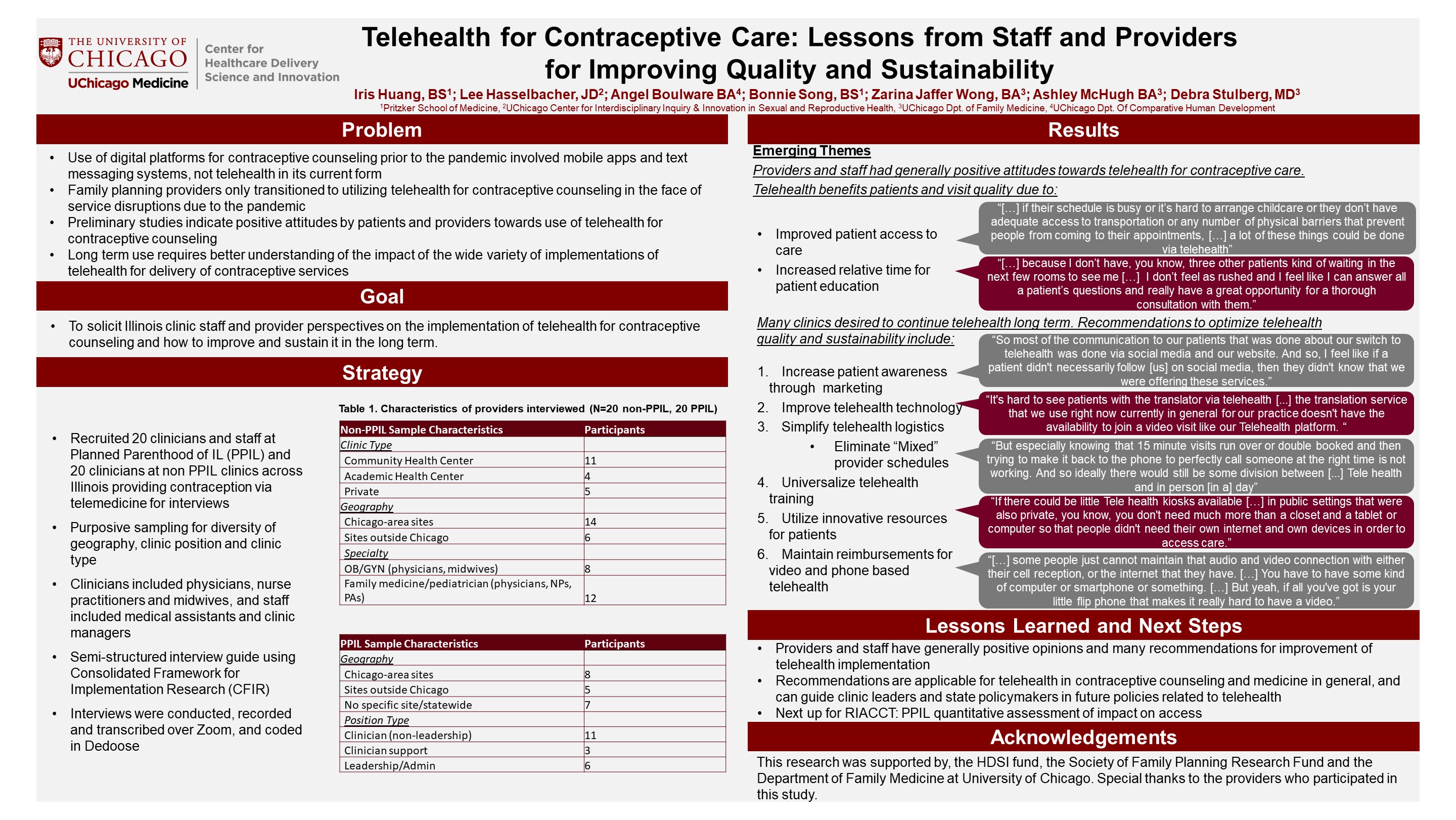SRFP094: Telehealth for Contraceptive Care: Lessons from Staff and Providers for Improving Quality and Sustainability
Iris Huang; Debra Stulberg, MD; Ashley McHugh; Zarina Wong, BA; Lee Hasselbacher, JD; Angel Boulware; Bonnie Song, BS
Abstract
Objective: To solicit staff and provider perspectives on the implementation of telehealth for contraceptive counseling and how to improve and sustain it in the long term.
Study Design: Researchers recruited and interviewed clinicians in primary care and obstetrics/gynecology (Ob/Gyn) clinics across Illinois (July-Sept 2020). We then recruited clinicians and staff from Planned Parenthood of Illinois (PPIL) clinics (Dec 2020-Jan 2021). Interviews were conducted, recorded, and transcribed via Zoom, and transcripts were verified by researchers and coded in Dedoose. Analysis focused on defining common themes regarding steps to improve quality and sustainability of telehealth.
Setting: Throughout Illinois, in community health centers, private and academic practices that provide family planning services, and PPIL.
Population Studied: 40 participants, including clinicians in family medicine, Ob/Gyn, and pediatrics; midwives, and nurse practitioners; as well as administrators and non-clinician staff from PPIL.
Intervention/Instrument: N/A
Outcome Measures: N/A
Results: Participants expressed generally positive attitudes towards telehealth, noting that it was a viable practice that not only maintained quality of care, but benefited patients and providers by increasing time for patient education and patient access to care. Nearly all stated that their clinics desired to continue telehealth in the long term. Still, many expressed that improvements need to be made in the quality and sustainability of telehealth, which are summarized with six recommendations: increase patient awareness through marketing, improve telehealth technology, simplify logistics, universalize training, utilize innovative resources for patients, and maintain reimbursements for video and phone based telehealth. While some of these come from issues specific to contraceptive counseling, these suggestions can be applied to telehealth implementation as a whole.
Conclusions: Telehealth for contraceptive care in the long term is desirable for primary care and family planning clinics across Illinois. However, based on the experiences of staff and providers, there are aspects of implementation that can be improved to ensure the quality and sustainability of telehealth.

Jack Westfall
jwestfall@aafp.org 11/21/2021This is a great topic and research study. Nice work. Thanks